Load test is a type of performance testing used to evaluate the behavior of a system under expected and peak loads and find out how the system performance under parallel and sequential user loads.Let’s walkthrough how to do it
Summary
- A Load test is a type of performance testing used to evaluate the behavior of a system under expected and peak loads.
- The main purpose of conducting load tests is to determine the system’s capacity, responsiveness, stability, and overall performance in real-world scenarios.
What is Load Test?
- Load testing is a type of non-functional software testing that investigates how well an application’s stability, speed, scalability, and responsiveness operate under a given workload.
- It’s a vital stage in ensuring software quality, but it’s usually treated as an afterthought, starting after functional testing and, in most cases, after the code is ready for release.
Why to use Load Test?
- Through load testing, aiTest helps you optimize your infrastructure costs. This knowledge allows you to make informed decisions about scaling, resource provisioning, and cost optimization.
- By understanding how your application performs under different loads, you can identify the optimal resource allocation and configuration for your environment.
- You can determine whether your application can handle increased traffic, user concurrency, and resource demands.
Benefits
The benefits of Load testing in aiTest include:
- Load testing helps validate the performance of an application or system under realistic conditions.
- aiTest’s load testing feature helps businesses pinpoint performance bottlenecks and breakpoints before product release.
- Leverage aiTest’s functional test automation for streamlined testing processes and instant performance feedback.
- aiTest’s fully managed cloud network ensures efficient load tests without costly infrastructure investments.
How to Create Testrun in Load Test?
- Sign up using your E-mail or Google account.
- Go to
Load Test
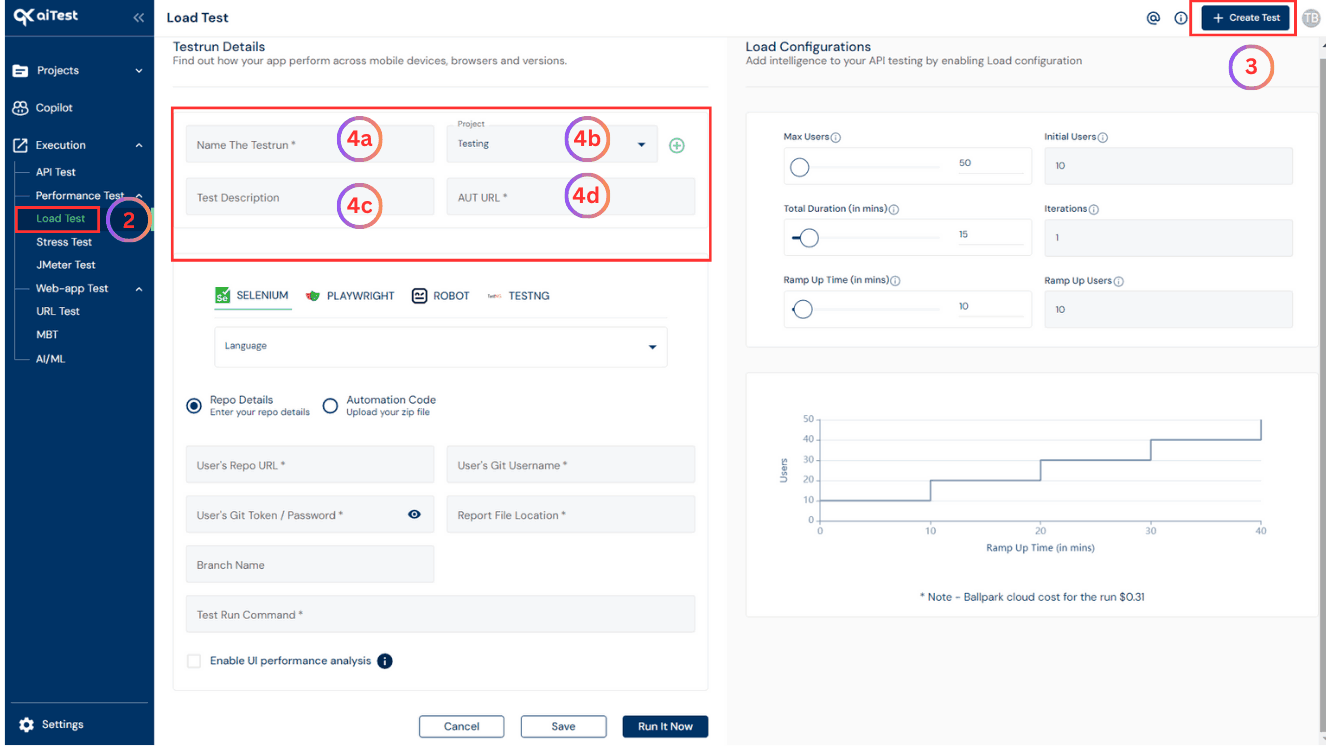
- Hit the Create Test button.
- Configure your test
- a)Name the testrun: Give the name of testrun whatever you want or which is related to your application, So that it will be easy to get that particular testrun details whenever you want. i.e. test-example.com, test-demo.com, etc.
- b)Project: Select a project in which you want to run your test or you can create a project by clicking on the red colored plus sign(+) button.
- c)Test Description: Write some testrun description to make your testrun more informative.
- d)AUT URL: Application Under Test URL. e.g. https://example.com
- Select language from language option.

- Now here you can choose Repo Details or Automation Code.
- Repo Details: Provide the Repo Details User’s Git Repository URL, User’s Git Username, User’s Git Token or Password,Branch Name, Report File Location and Testrun Command.

- Automation Code: If you select
Automation Code you will need to upload your zip file and enter Report File Location and Testrun Command.
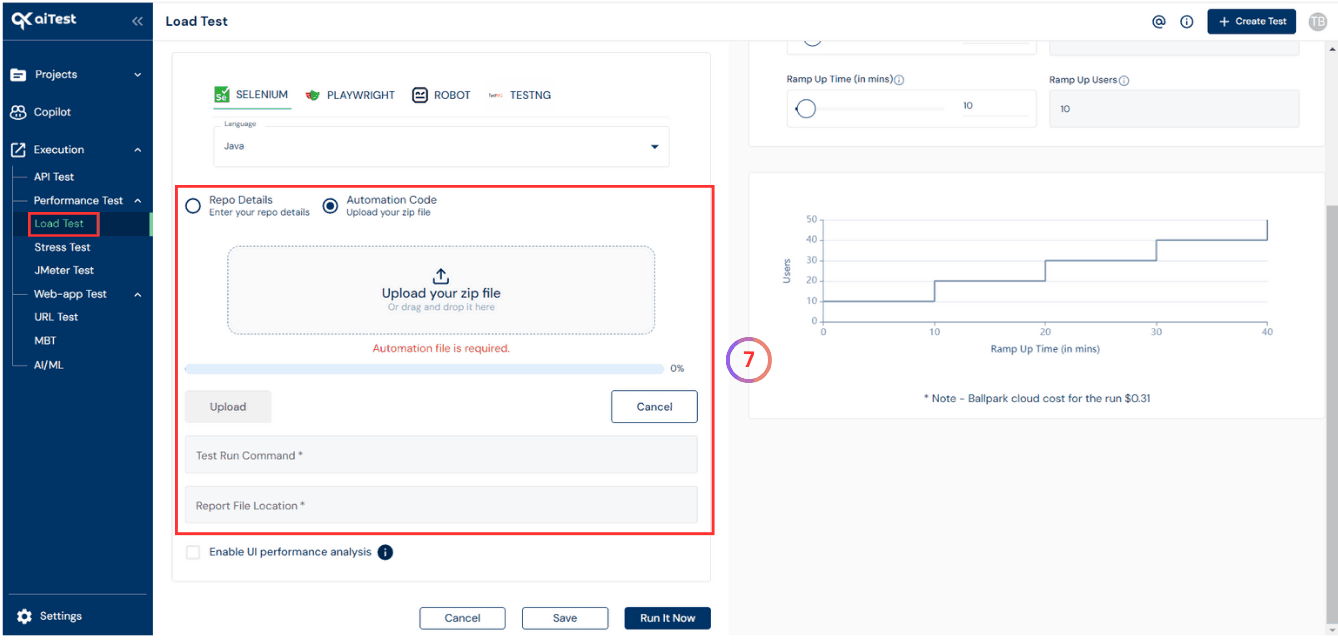
- On the right-hand side you can configure the Run Configurations such as
- a)Max Users: The total number of users you want to test for.
- b)Initial users: The initial number of users.
- c)Total Duration: Total time to run the test as per given users.
- d)Iterations: Iterations in load testing involve running multiple cycles of simulating user behavior.
- e)Ramp Up Time: The time after which you want to add more users.
- f)Ramp Up Users: The number of users to add after the ramp.
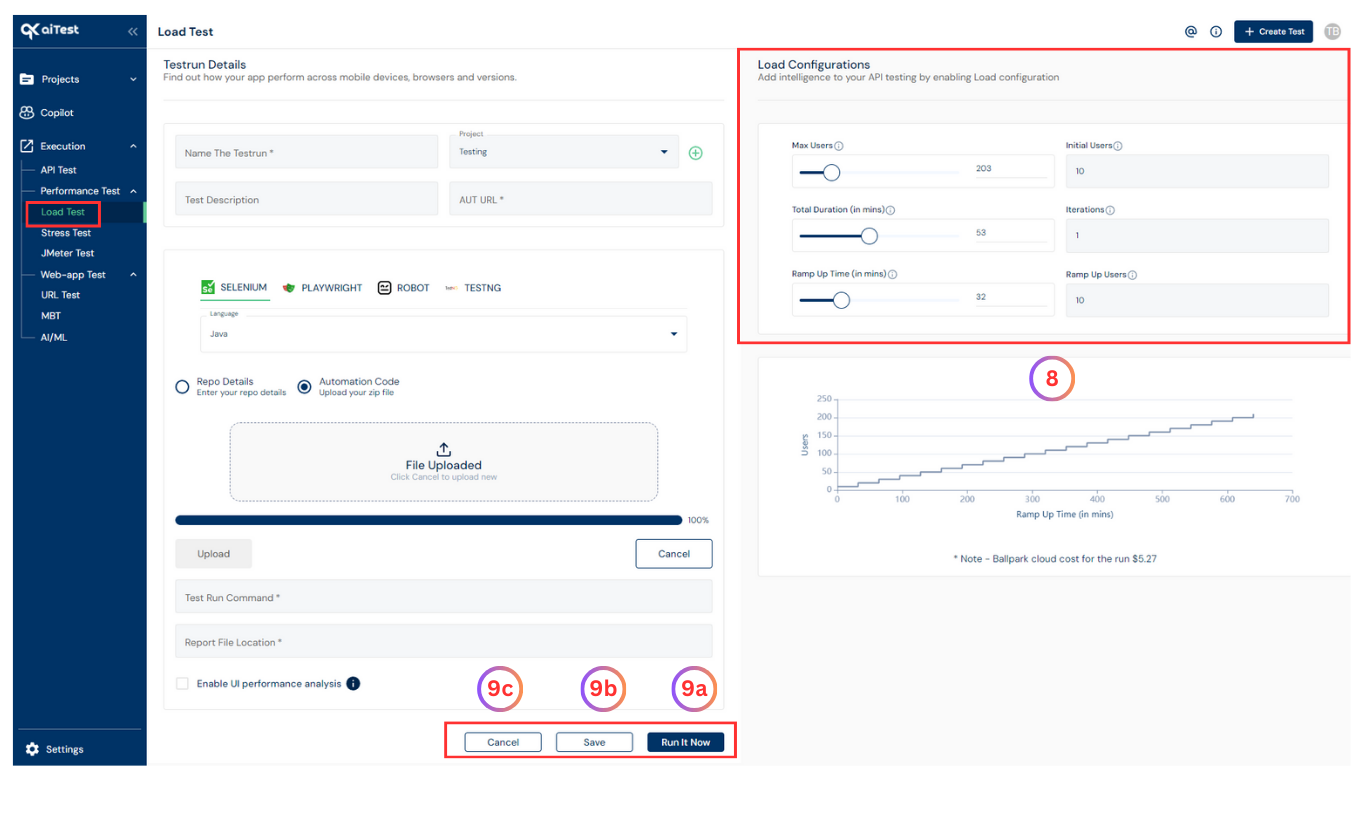
- Once you are done with the above steps you can do either of the following:
- a)Run It Now: Immediately run the automation code to test the browser compatibility of your apps with across mobile devices, browsers and versions.
- b)Save: Save the configuration for later run as draft testrun.
- c)Cancel: Reset and go back to dashboard page.
- d)Update: Update the configurations of the saved draft testrun.
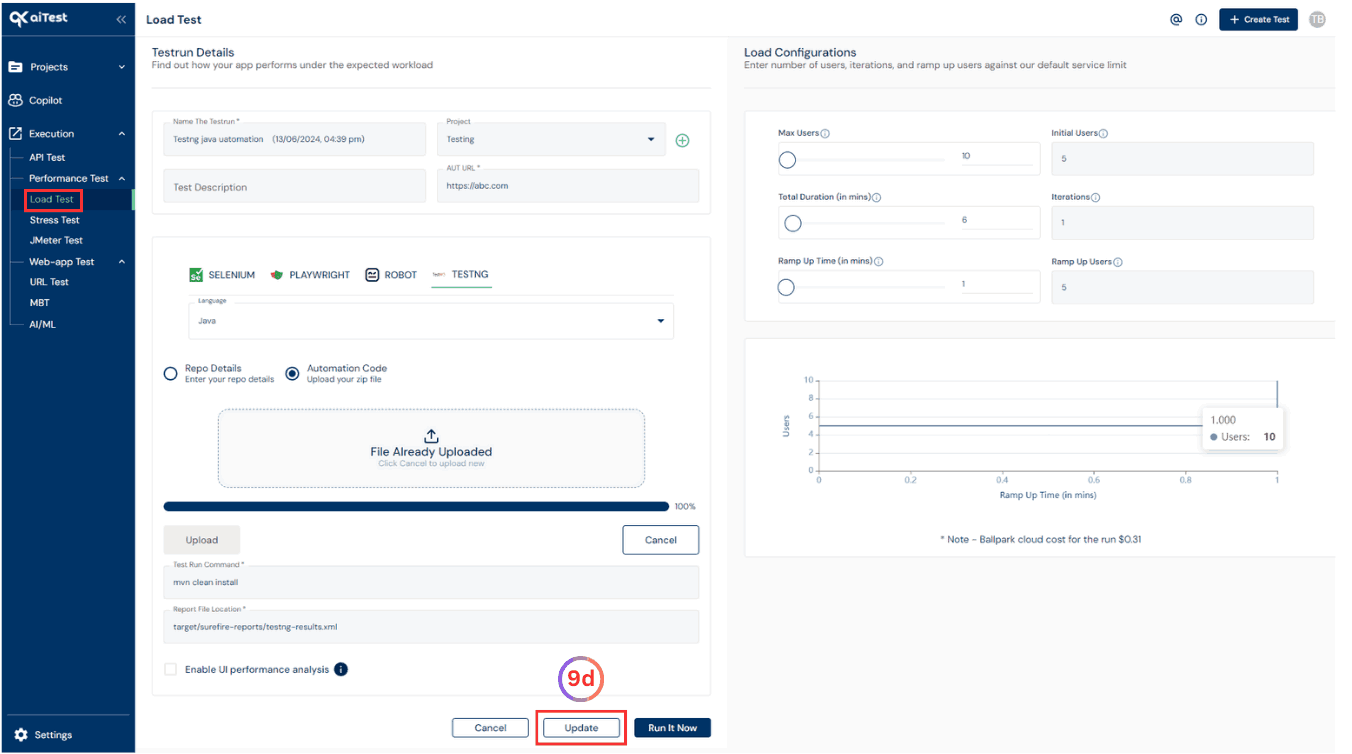
Run Analysis
After the testrun is completed, you can access the Run Analysis to review the results.
Here’s how:
- Go to the Load Test dashboard to see an overview of the testrun results.
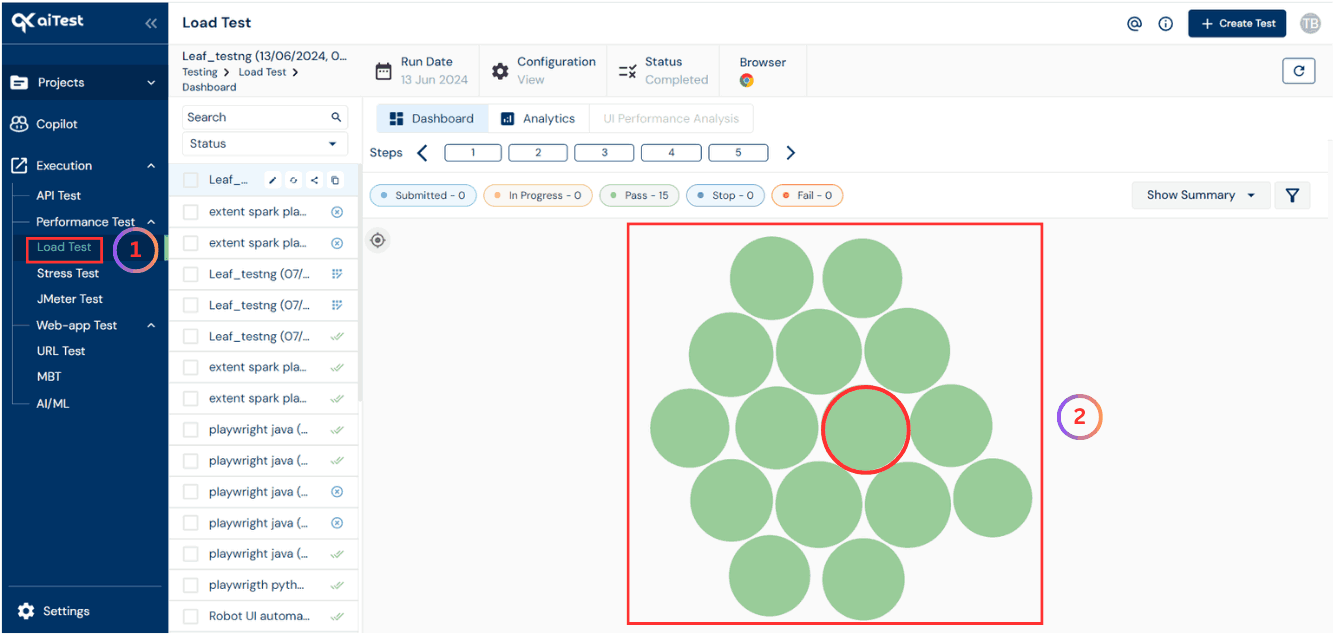
- Once you have reached the Load Test dashboard page of aiTest, For more detailed information, click on the
Bubble associated with the completed testrun. You’ll find options to view Automation Logs and Report Details.
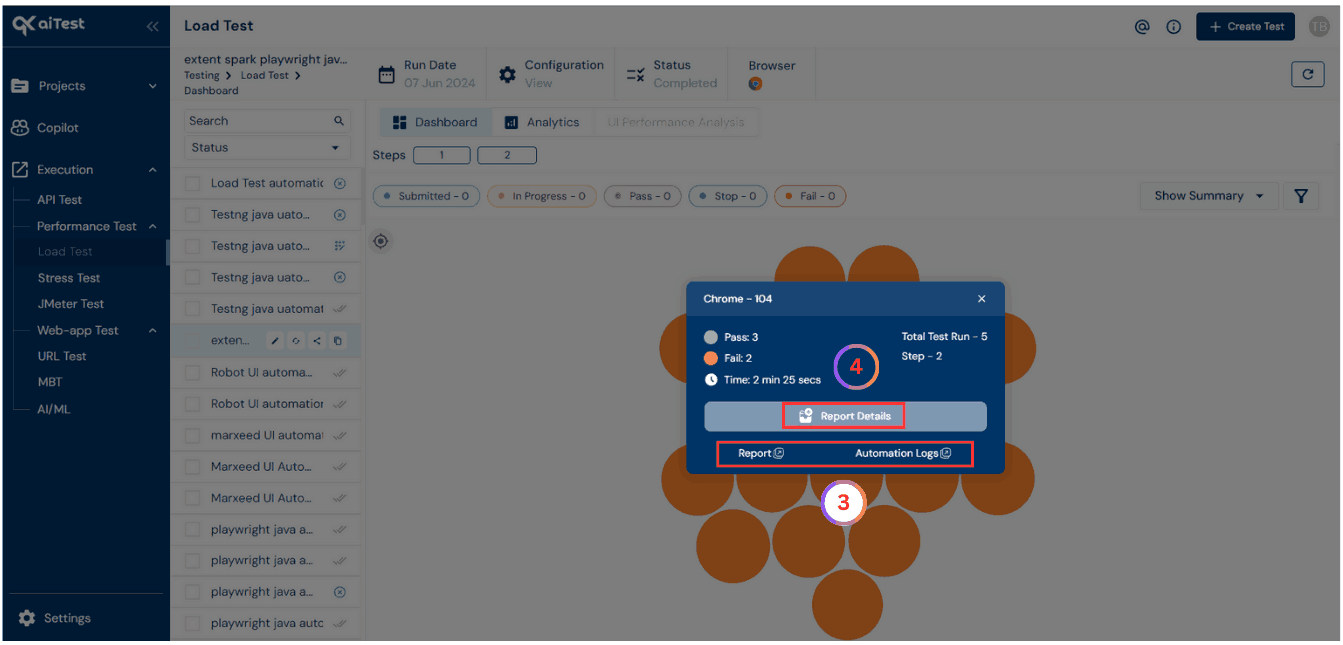
- Click on
Automation Logs to view detailed logs and any potential issues encountered during the test.
- To access the Test Report, click on the
Report Details button.
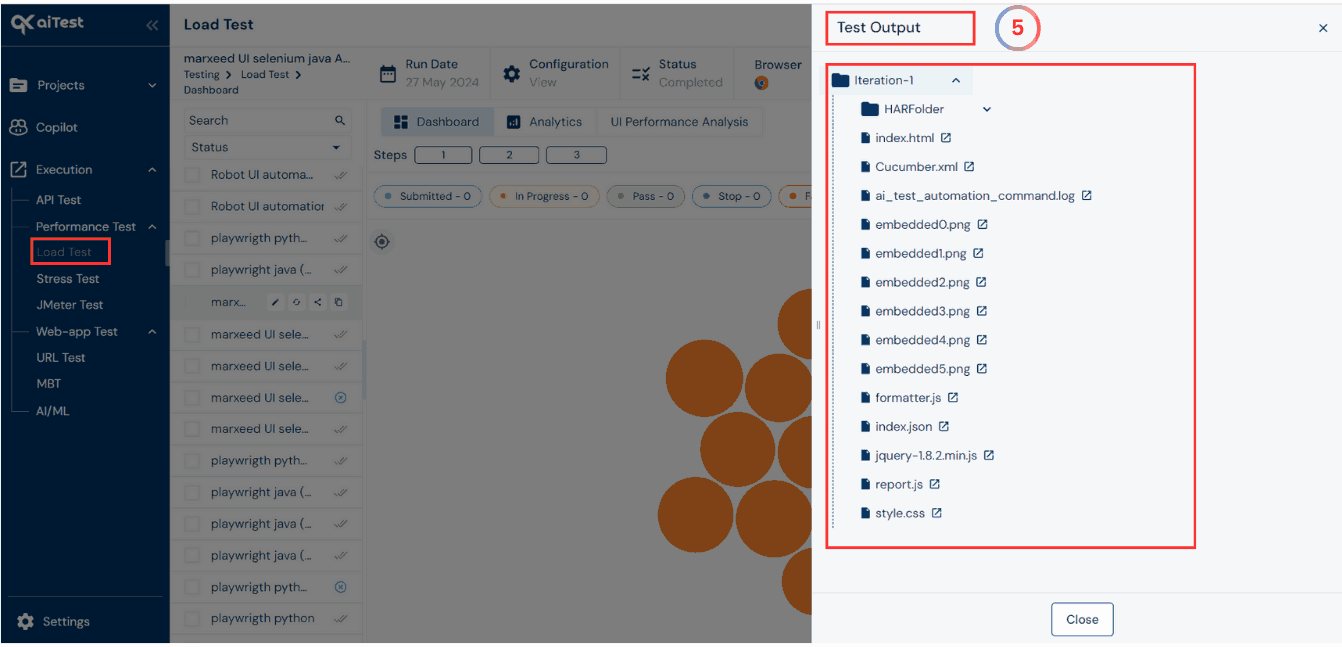
- Within the
Test Output, click on Iteration-1 to find the .html, .xml and .json report files.
- These files contain comprehensive information about the test results, including the URLs tested, their status, and any errors encountered.
Questions answered
- What is Load Test?
- How to use aiTest for Load Testing?








